
There’s a saying by Steve Jobs which goes: “It’s not the tools you have faith in – tools are just tools – they work, or they don’t work. It’s the people you have faith in or not.” He knew that one very important secret, which is that your business will only ever be as good as your employees.
When you need to run a company and make critical spending decisions that can either make or break you, one of the most important decisions that can help in driving your company to new heights is hiring the right people.
It may seem like a daunting task; having to filter through hundreds of hopefuls, shortlist the ones with the greatest potential, run through multiple interview sessions, and then select the one who’s (hopefully!) the best fit.
It can even seem scary when you find out there’s research which proves that hiring the wrong people will actually pose a significant cost to your company. For example, the average cost of a bad hire is estimated to range from 30% to 150% of an employee’s annual salary (re-hiring costs, lost productivity, lost manager time, lost training investment, training of replacement).
From the receptionist desk to the executive offices, every single one of your employees represents a facet of your business to clients, and to the community at large. Which is why when you make the wrong hiring decision, that can cost you more than just money, such as the following:
Every new employee will need some form of training, and time to acclimatise to the job. The wrong person won’t be able to grasp the job scope and responsibilities quickly enough, and may even decrease productivity, especially if he/she requires frequent follow-ups, retraining, and even disciplinary action. As time is money, you shouldn’t have to worry about whether your employees are getting the job done (and done right), or holding their hand for as long as they work there.
When you hire someone who’s wrong for the job, not only will you and your business suffer, your company’s image may take a beating too. This is because what people say about you and/or your company does matter – and you wouldn’t want word to get around that there’s a high turnover rate, because that’s not a place most jobseekers want to join. Additionally, you wouldn’t want the bad hire to go around talking negatively to either existing employees or outsiders about their experience.
If someone doesn’t want to grow with you, they’re essentially working against you, and that’s the last thing you want on your plate when you’re trying to focus on growing the business. You want people who are able to help you in not only contributing to the company’s overall success, but working to stabilise and improve the business, as well as reducing the need to rehire – over and over again.
Let’s face it, having so many people come and go in such a short period of time may have an adverse effect on the existing employees because it can cause them to feel uneasy and/or unsettled. Furthermore, a bad hire is able to sow discord and cause tension among their teammates and other departments, where it may not have even existed before, thus causing an upset in the daily workflow, overall people connectivity, and company culture.
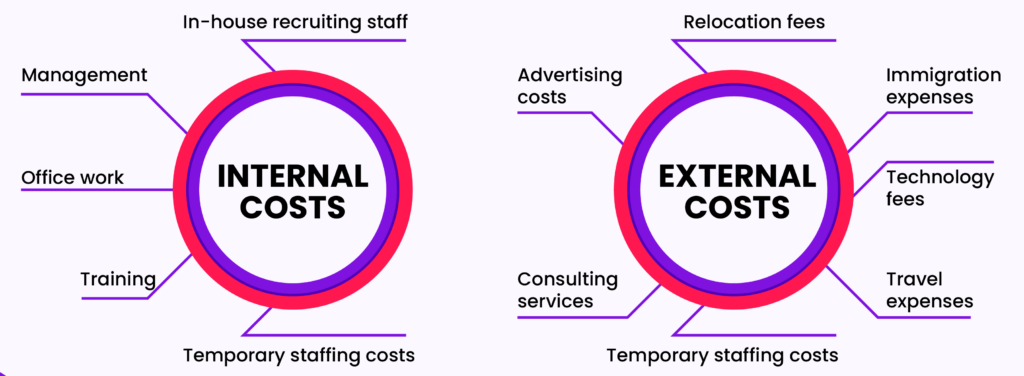
For many small- to medium-sized companies, having a dedicated in-house HR team won’t make much fiscal sense, which is why many opt to turn to external recruiters to facilitate hiring. With only a small team, every new hire is crucial for the company’s success, so turning to an outside expert who has a talent pool of qualified and experienced candidates as well as an array of tools and resources to draw upon is often the preferred choice. However, bear in mind that external recruiters/agencies have various pricing structures which can quickly add up, no matter whether it’s in the form of a role’s annual salary, retainer-based, or flat rate.
It’s true that an experienced and skilled Human Resources (HR) team is a crucial asset for any company’s recruiting efforts. Even if you’re only able to hire one dedicated HR person at a time, the tasks that will need to be carried out for the hiring process are valuable: Setting up the job posts, putting them out on job boards, screening and selecting the candidates, assessing and interviewing them, all the way to making an offer and training them. But wait, they have more than that to do too, such as drafting corporate policies and procedures, which is why all this can come at a high cost.
Now that you’ve got the best in-house HR person/team ready to start hiring for you, you’re going to have to start getting those job posts out in the open. Writing a compelling ad is no small task, and it can make the difference between attracting the top talent, or just another average person who needs a job. When it comes to boards to post, there are several free options to consider like LinkedIn and ZipRecruiter, but those come with limited features. Other popular job board options that charge for you to use them include Indeed, Monster, CareerBuilder, and Dice.
After you’ve got a shortlist of who you think are the “right” candidates, you need to screen and run background checks before making an offer to one of them. First up, a lot of time will go into discussing with various department heads to whittle the list down further, and setting up screening calls. Then the background check lets you learn about them more by verifying basic information like the individual’s education and previous employers, right up to criminal databases, so that you have peace of mind that they’re as good as they seem.
Did you know that your new hire’s onboarding and training process would need to be factored into the total cost of hiring an employee? Here’s a rough example for you to consider: According to a report by Training Magazine, it would “cost” companies an average of 46.7 hours to train an employee, plus an additional USD986 in training expenses. Apart from that, there are also IT equipment costs (laptop/desktop, work phone, WiFi dongle, etc) and formal training costs (in-person/online courses, onboarding materials, etc) to factor in. But don’t worry, the training you provide is to get the new hire up to speed quickly, and prepare him/her to make key contributions!
Once the new hire has accepted and signed the job contract, it’s time to start paying their monthly salary when they begin work – which is the more obvious cost associated with hiring. When calculating your ongoing cost to hire though, make sure you also consider the taxes, benefits (like health insurance, retirement plans and employee growth initiatives), and bonuses (if relevant). You also need to bear in mind that most employees will expect their salaries to rise over a period of time, usually in line with their work contributions and keeping with your country’s inflation.
Apart from the most common methods of job boards or external recruiters/agencies, there are other methods which can prove successful, such as referrals, your website’s job availability page, or attending/hosting career/industry events. While it’s not easy to create an effective and enticing referral programme, the high-quality candidates it can generate actually makes it a great recruiting tool for many companies because you’ll be relying on the network of your existing employees, which can turn up many top talent yet untapped. As for the other methods, they too may have an associated cost, all of which must be taken into due consideration.
There are two main costs to look at — cost of recruiting and cost of dislocation due to hiring time. On top of that, there’s also a variable — time to hire that will affect how the cost is being calculated. Let’s dive into it:
Typically, working with a recruitment agency will cost you an average 22% of the employee’s annual salary. Meanwhile, if you are utilising in-house HR resources to help with the recruitment, considering the amount of hours and tools like job boards that are used, it will cost you an average of 12% of the employee’s annual salary.
Say you are looking to hire a Senior Software Engineer with an annual salary of $84,000. This will amount to:
Many companies underestimate the financial impact of the hiring process duration. Typically, it takes 10 to 12 weeks for a role to be filled, depending on the route they took to hire, be it in-house or with recruitment agency. The wait time will result in either no productivity or the need to redirect resources or hire contract labor.
As mentioned above, if this is a role that requires immediate productivity, we will need to factor in productivity losses and/ or contractor cost. For the same role of Senior Software Engineer with an annual salary of $84,000, productivity of 2x salary, and contractor rates of $50/ hr; we can roughly estimate the additional cost incurred during the hiring process.
| Agency | In-house | |
| Avg time to hire | 10 weeks | 12 weeks |
| Productivity loss | $32,307 | $38,769 |
| Contractor cover | $20,000 | $24,000 |
Based on the cost of recruiting, time to hire, and cost of dislocation due to hiring time, we can roughly gauge the total cost of hiring that is so much higher than what we have anticipated in the past. Here’s a summary of the total cost of hiring a Senior Software Engineer with an annual salary of $84,000:
| Agency | In-house | |
| Cost of recruitment | $18,480 | $10,080 |
| Cost of dislocation | $20,000 to $32,307 | $24,000 to $38,769 |
| TOTAL | $38,480 to $50,787 | $34,080 to $48,849 |
Another major cost is the time which is spent by whoever is involved with managing the recruitment process; they’re tasked with specifying roles, reviewing CVs, arranging interviews manually, collecting feedback and, as over 50% of offers made are rejected, they then have to repeat the process!
We’ve already discussed that almost all recruitment solutions are reactive, which is the act of sourcing candidates only when the need arises. The immediacy of that need means that companies are entirely reliant on candidates already in the market: Signed up with agencies, looking at ads, on job sites, or on databases. But studies have shown that this only represents around 20% of the qualified candidates in the marketplace, and even then, to access all of that you have to use every agency, database, and advertising medium.
A limited access, to only people who really want or need a new job, has a dramatic impact on the quality of talent. Most companies know that the candidates who apply to their job post(s) are irrelevant, which still significantly reduces their talent pool. If a company is able to access the wider pool of talent, as is achieved by the GRIT Talent Platform, there’s a demonstrable improvement in quality of talent, and as a result, an evident increase in productivity per head of between 10-30%.
Finally, up to half of new hires leave within the first twelve months, and the average is over 20%. The reasons are simple: The 6-8 weeks of contact with a company during a standard recruitment process is not enough to develop a cultural rapport between candidate and company. In short, the new hire starts work and then only finds out if they do ‘fit in’ or otherwise, any concerns they may have are amplified by the pressure of the new job.
In short, the true cost of hiring is not just how much you pay for recruiters (whether internal or external) but also include loss of productivity costs and more. An unplanned and unoptimised hiring process can result in the hiring cost soaring well above five times to eight times of their monthly salary.
At GRIT, we understand the importance of keeping the cost low when it comes to hiring. And with that, we have came out with an incredible solution — FreshlyBaked (previously known as GRIT Talent Platform), where our AI-powered talent platform allows you to achieve the below:
With GRIT Talent Platform, we are able to reduce your hiring cost by a whopping 80%! It is achievable when our intuitive talent platform with support of our experienced talent advocate team are able to source, curate, and qualify talent for any roles in just 3 weeks!
With our recruitment fees of just $999 and an incredible fast time to hire, GRIT Talent Platform is the most effective and efficient way you’re really going to address the fundamental issue of recruitment costs!
Join over 500 companies that are hiring (effectively and efficiently) with GRIT!
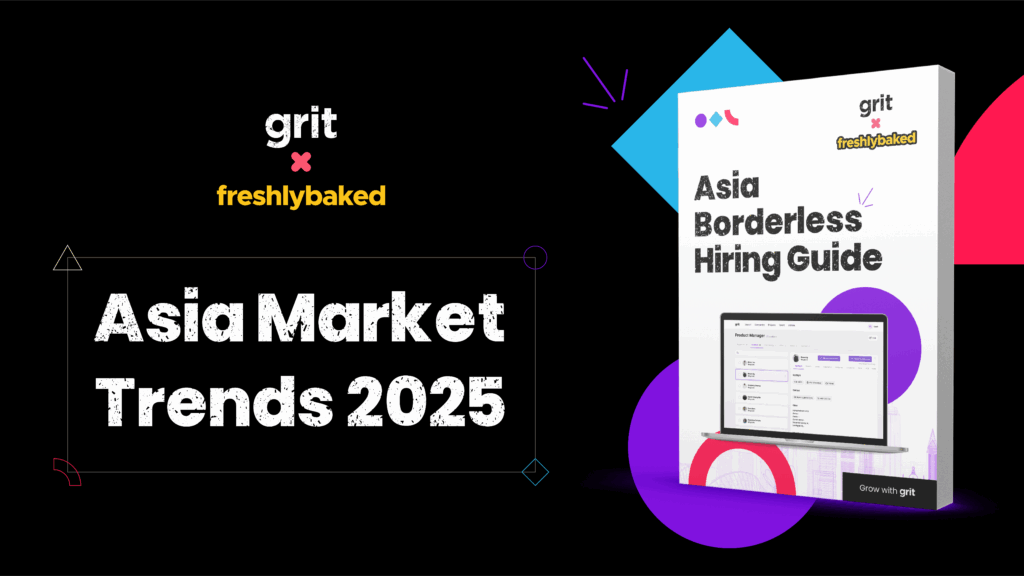
Hiring has gone global. The best teams are no longer built in a single city or country — they’re distributed across regions that offer the right mix of skills, cost-efficiency, and availability.
Our APAC Salary Comparison Report 2025 gives you a clear, data-backed view of salaries across Australia, Malaysia, India, Vietnam, Sri Lanka, and the Philippines. Use it to benchmark compensation, unlock cost advantages, and plan your hiring strategy with confidence.
Benchmark with confidence
Get accurate salary ranges for tech, data, finance, sales, and marketing roles across six key APAC markets.
Find hidden opportunities
Identify where specialized talent is available and affordable — from data scientists in India to developers in Vietnam.
Design a future-ready hiring strategy
Align your workforce plan to market trends, remote work adoption, and talent availability across the region.
Equip your team with actionable salary data and insights to hire strategically in 2025.
Download the APAC Salary Comparison Report today and turn global talent into your competitive advantage.
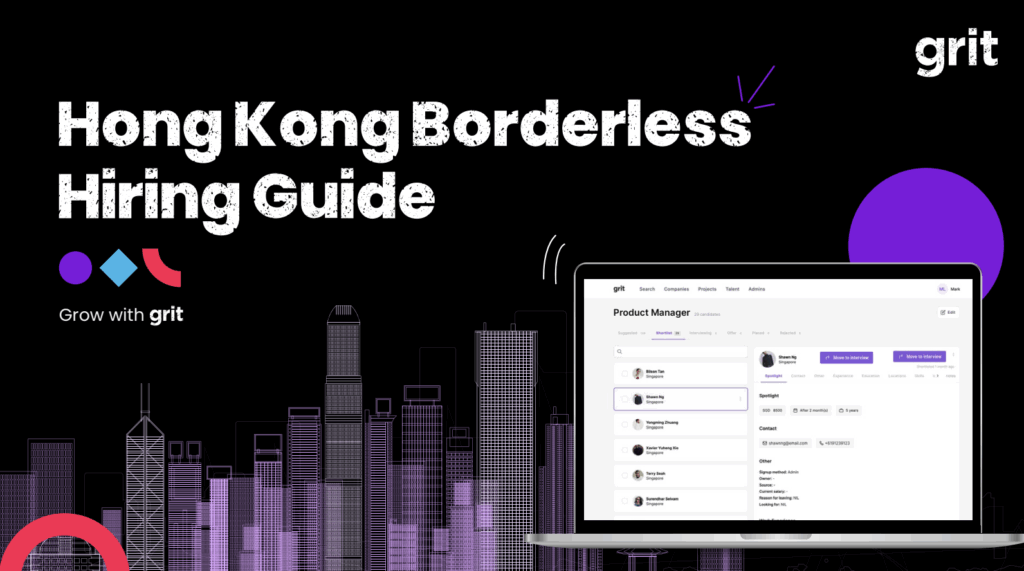
With cost pressures rising and digital talent in short supply, more Hong Kong companies are turning to borderless hiring as a strategic solution. But how do you balance quality, cost, speed, and compliance across international markets?
This guide delivers practical strategies and real-world insights for business leaders, HR teams, and hiring managers looking to expand beyond borders in 2025 and beyond.
Whether you’re scaling your tech team or building a lean regional hub, this guide equips you with the insights and data to do it right. If you’re based in Hong Kong and want to:
then this guide is for you.
Download the 2025 Hong Kong Borderless Hiring Guide now!
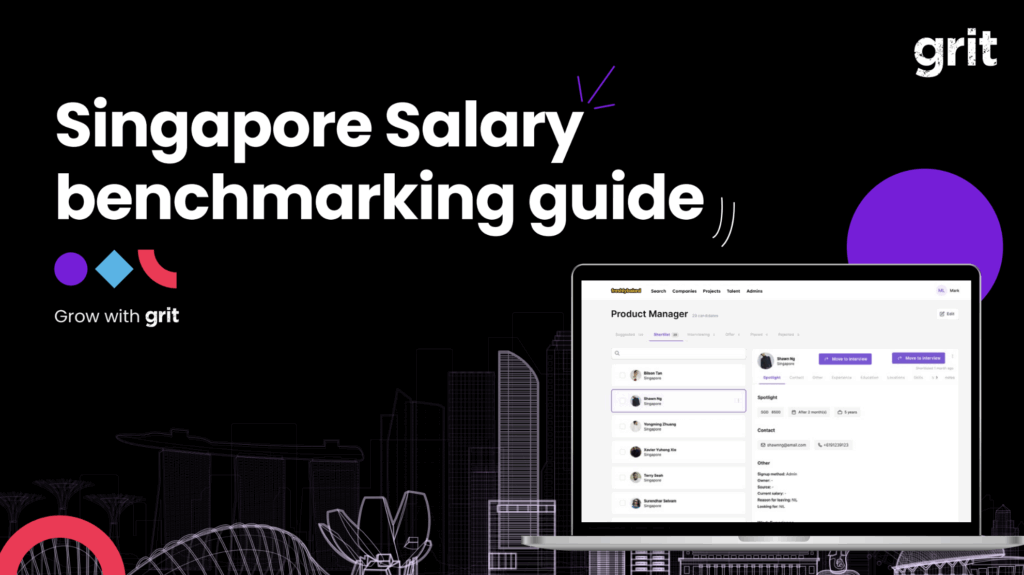
Singapore remains one of Asia’s most competitive hiring markets, with high salaries, low unemployment, and fierce competition across tech, finance, and digital roles. Yet, the landscape is shifting. In 2025, employers face a dual challenge: attracting top-tier talent while managing rising labour costs and persistent skills gaps. Whether you’re hiring locally or building remote teams across Southeast Asia, this salary report offers the insights you need to stay ahead.
If you’re building teams in Singapore—or hiring remotely from Malaysia, Vietnam, or India—this guide arms you with the market intelligence to make competitive, data-driven decisions. With tech talent demand rising and 88% of IT employers reporting hiring difficulties in Singapore, there’s no room for guesswork. Whether you’re an HR leader, hiring manager, or business executive, this report gives you the clarity to:
Get instant access to the 2025 Singapore Salary Benchmarking Guide.
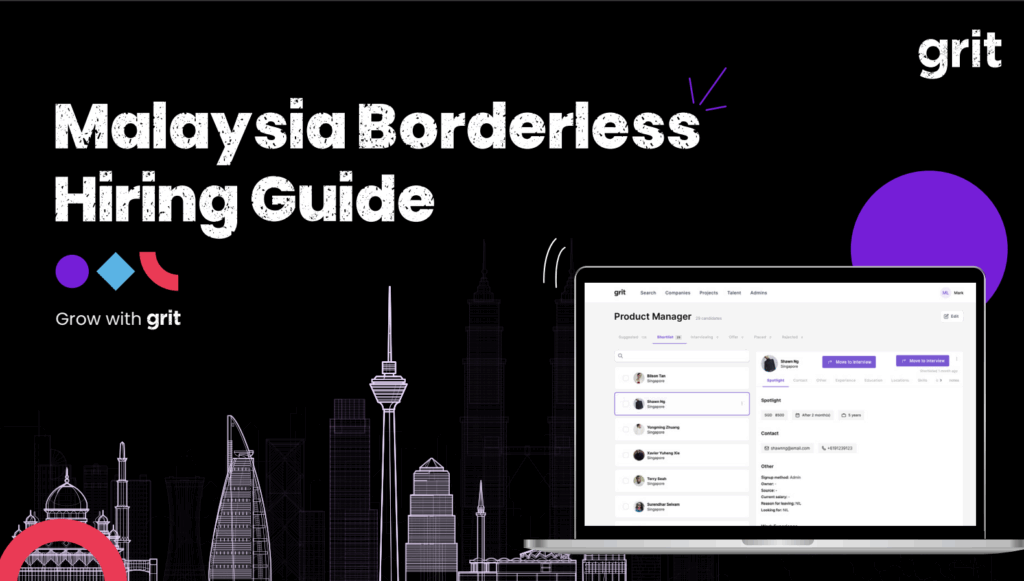
With competitive infrastructure, strong digital talent, and rising wage pressures, Malaysia is becoming both a source and a hub for cross-border hiring. Whether you’re an MNC offshoring into Malaysia or a local company hiring beyond borders, this report is your guide to navigating the next phase of remote-first recruitment.
Built for business leaders, HR teams, and talent strategists, this guide offers data-backed insights to help you hire smarter in 2025 and beyond.
If you’re hiring in Malaysia or building a distributed team across the region, this guide helps you:
Download the 2025 Malaysia Borderless Hiring Guide

Australia is on the brink of a tech workforce transformation. With over 1 million tech professionals and a forecast to hit 1.3 million by 2030, the country is reshaping what the digital economy looks like—locally and across the region.
But in a market this fast-moving, staying competitive requires more than guesswork.
This report delivers the data-driven insights every hiring leader, HR professional, and tech executive needs to make informed decisions in 2025 and beyond.
Whether you’re scaling an engineering team in Sydney, building a data hub in Vietnam, or offshoring cloud roles to Malaysia—this guide arms you with the compensation benchmarks and hiring strategies to make the right move.
With 226,000 tech roles forecasted to go unfilled by 2030 in Australia alone, there’s never been a more critical time to understand the evolving tech talent landscape.

Throughout 2024/2025, Australia’s job market has shown cautious optimism, navigating a balance between growth ambitions and economic prudence. Businesses across the nation have remained vigilant, shaped by global uncertainties, inflation, and fluctuating commodity markets, influencing a cautious but steady hiring approach.
Australia’s economy continues to benefit from robust trade relationships, especially with China. However, domestic businesses are adapting to challenges including tighter immigration policies and fierce global competition for talent. As remote and hybrid work solidify their presence, companies are increasingly broadening their talent search beyond major cities, tapping into regional and offshore talent pools.
Tech & digital sectors have notably surged, driven by a heightened focus on digital transformation and innovation. Roles in software development, cybersecurity, data analytics, AI, and cloud computing are in particularly high demand, reflecting businesses’ efforts to future-proof their operations.
Engineering and construction sectors are facing significant skill shortages due to ongoing infrastructure and renewable energy projects, presenting valuable opportunities for both domestic and international professionals. Healthcare and ESG sectors also continue growing, fueled by demographic trends and an increasing corporate focus on sustainability.
Offshoring is reshaping Australia’s job market significantly, particularly affecting routine roles in IT support, customer service, and finance. Companies are strategically outsourcing these positions to countries offering lower operational costs. Nevertheless, high-value, specialized roles like financial analysts, cybersecurity experts, and product managers are firmly retained domestically, emphasizing innovation, leadership, and strategic capabilities.
This report delves deeply into hiring trends, sector-specific insights, the evolving influence of offshoring, and provides detailed salary benchmarks across critical tech and digital roles including:
Download the full Australia Tech & Digital Market Trends 2024/2025 report now to access comprehensive insights, salary benchmarks, and equip your business to stay competitive in Australia’s dynamic employment landscape!

GRIT Search Australia is hosting an exclusive in-person event — Scaling Seamlessly: How to Grow Your APAC Presence with Confidence.
If you’re looking to expand into APAC and want actionable insights on hiring, market entry, and scaling strategies, register your interest below to be the first to know when registration opens.
What You’ll Learn:
🚀 How to strategically scale your business in APAC
🌏 Key talent hubs and hiring trends across the region
💡 Best practices for building high-performing cross-border teams
📊 Exclusive insights from industry experts who have successfully scaled in APAC
🤝 Networking opportunities with APAC hiring leaders and peers
Register your interest now to secure early access to this must-attend event!
📩 Submit your details now and be the first to receive updates on this exclusive event!

Hiring locally is becoming increasingly challenging. Rising salary expectations, limited access to specialized skills, and high turnover rates are making it harder to grow your business.
What’s the solution? Offshore hiring.
With access to global talent markets, you can find the skills you need at competitive costs, all while ensuring business continuity and scalability.
Our APAC Salary Comparison 2024/2025 report provides the data you need to evaluate offshore hiring opportunities across Australia, Malaysia, India, Vietnam, Sri Lanka, and the Philippines.
The report includes salary benchmarks for key industries, such as:
With clear data on how salaries vary by country, you’ll be equipped to make strategic decisions about hiring locally or offshore.
Don’t let local hiring challenges limit your business growth. Download the APAC Salary Comparison 2025 report and discover how borderless hiring can help you build high-performing teams while staying within budget.

Throughout 2024, hiring in Hong Kong has remained relatively cautious, with growth still subdued despite improvements from the previous year. Global economic challenges, geopolitical tensions, and the lingering impact of the pandemic have left many companies hesitant to expand, adopting a ‘wait and see’ approach. The city’s attempt to re-establish itself as a regional headquarters for international firms has been impacted by the loss of businesses relocating to places like Singapore, tarnishing Hong Kong’s reputation as a global career hub.
The demand for skilled professionals in sectors such as technology, fintech, ESG (Environmental, Social, Governance), and healthcare continues to grow. Companies are increasingly offshoring routine roles to neighboring regions with lower costs, like Southeast Asia and mainland China, but focusing on retaining high-value, strategic roles in Hong Kong. Despite the uncertainties, Hong Kong’s strategic location and efforts to attract global talent remain key to its gradual recovery, with tech-driven sectors expected to lead hiring trends moving forward.
Our report highlights the latest hiring trends, key roles in demand, challenges, and a comprehensive salary benchmark across these core sectors:
Download the full report to gain detailed salary insights and stay competitive in Hong Kong’s job market for 2024/2025!